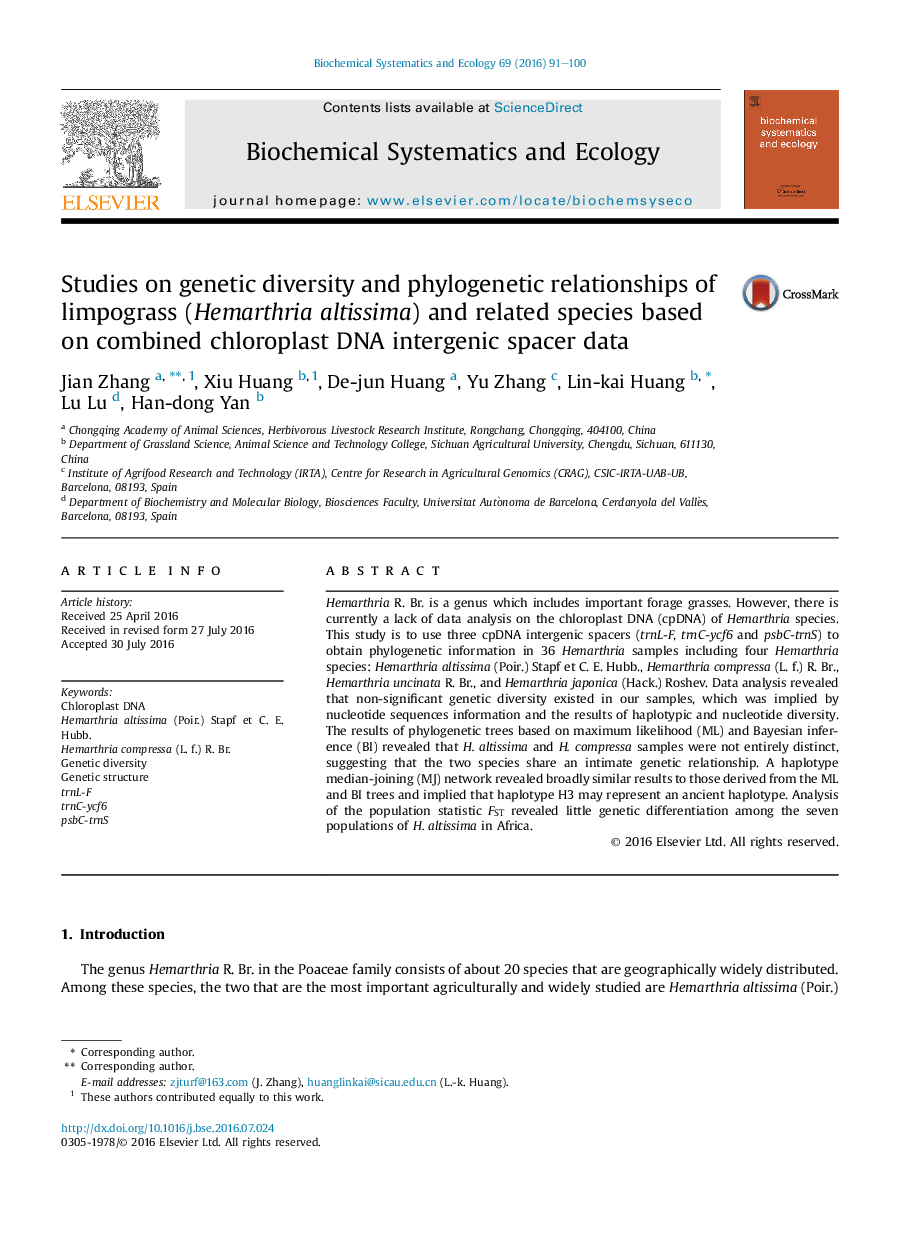| Article ID | Journal | Published Year | Pages | File Type |
|---|---|---|---|---|
| 1351223 | Biochemical Systematics and Ecology | 2016 | 10 Pages |
•Three cpDNA intergenic spacers (trnL-F, trnC-ycf6 and psbC-trnS) were firstly used to estimate the genetic diversity and phylogenetic relationships of 36 Hemarthria samples including four Hemarthria species: Hemarthria altissima, Hemarthria compressa, Hemarthria uncinata, and Hemarthria japonica.•The total sequence length of the aligned combined data was 2204 bp, including 2166 invariable sites and nine parsimony-informative sites.•Two different phylogenetic methods, maximum likelihood (ML) and Bayesian inference (BI), revealed that H. altissima and H. compressa samples were not entirely distinct, indicating an intimate genetic relationship between the two species.•The results of a haplotype median-joining (MJ) network revealed broadly similar results to those derived from the ML and BI trees.
Hemarthria R. Br. is a genus which includes important forage grasses. However, there is currently a lack of data analysis on the chloroplast DNA (cpDNA) of Hemarthria species. This study is to use three cpDNA intergenic spacers (trnL-F, trnC-ycf6 and psbC-trnS) to obtain phylogenetic information in 36 Hemarthria samples including four Hemarthria species: Hemarthria altissima (Poir.) Stapf et C. E. Hubb., Hemarthria compressa (L. f.) R. Br., Hemarthria uncinata R. Br., and Hemarthria japonica (Hack.) Roshev. Data analysis revealed that non-significant genetic diversity existed in our samples, which was implied by nucleotide sequences information and the results of haplotypic and nucleotide diversity. The results of phylogenetic trees based on maximum likelihood (ML) and Bayesian inference (BI) revealed that H. altissima and H. compressa samples were not entirely distinct, suggesting that the two species share an intimate genetic relationship. A haplotype median-joining (MJ) network revealed broadly similar results to those derived from the ML and BI trees and implied that haplotype H3 may represent an ancient haplotype. Analysis of the population statistic FST revealed little genetic differentiation among the seven populations of H. altissima in Africa.
Graphical abstractFigure optionsDownload full-size imageDownload as PowerPoint slide
